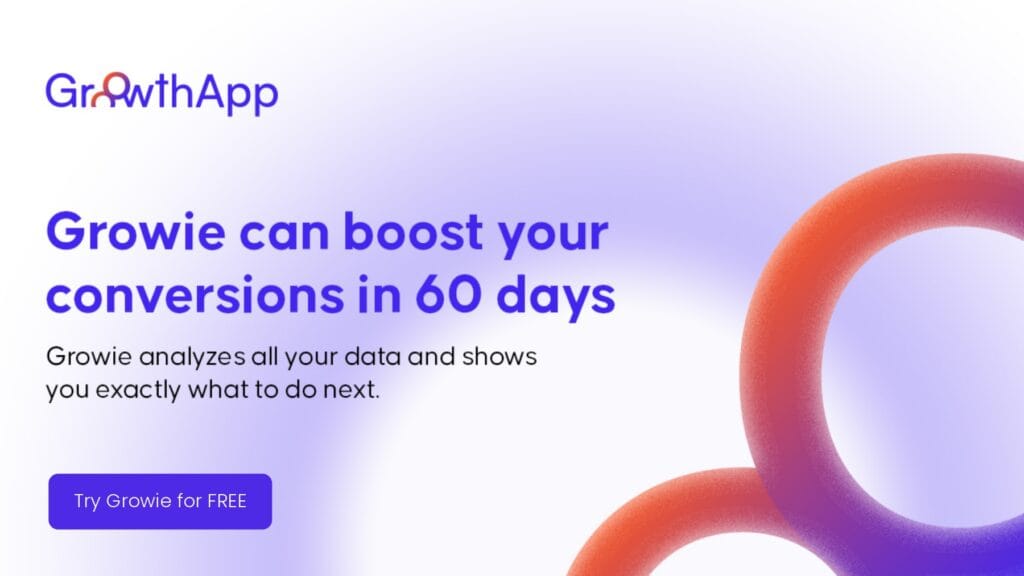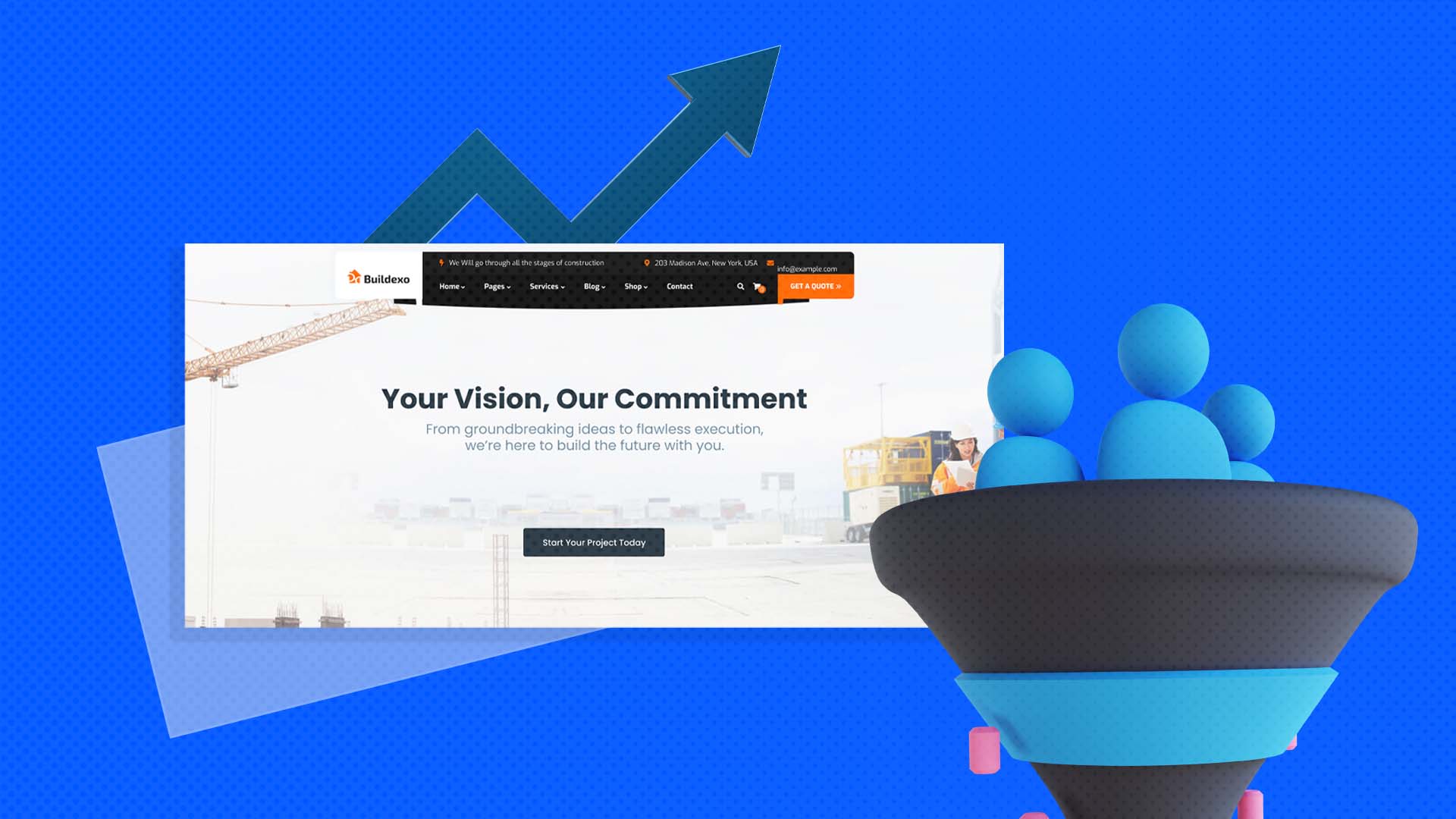Everyone likes to talk about how easy it is to come by website data these days. Your website is generating traffic, visitors are clicking buttons, scrolling through pages, and bouncing off—and all that behavior is logged.
By 2024, businesses have more data than they know what to do with. But here’s the catch: data doesn’t equal insight. And that’s where most companies get stuck. According to research, 73% of company data goes unanalyzed, simply because making sense of it is far more challenging than collecting it.
When the spreadsheets start piling up, the next logical step is to hire an expert. You bring in a CRO consultant to translate those numbers into something useful.
The only problem? The average cost to hire a top tier CRO agency starts anywhere from $10,000 per month—and that’s not pocket change, especially for a startup trying to gain traction. For many, this cost is prohibitive, but the need for optimization is still pressing.
You need conversions, and you need them now.
To address this, countless tools have emerged—heatmaps, A/B testing platforms, analytics dashboards—each offering a slice of the solution. But the fundamental gap remains: there’s still a need for real data interpretation, affordable access to CRO expertise, and solutions that are quick and scalable for startups. GrowthApp was born out of this exact gap.
This article will explore why GrowthApp is the best AI CRO tool for startups, how it works, and how it fills that gap—turning raw data into actionable strategies without the hefty price tag or the steep learning curve.
Why traditional methods fall short
There’s a narrative out there that suggests data is the answer to all your marketing problems. “Just gather enough data, and you’ll know what to do.” But that’s only half true. Data is abundant, but insight is rare. And this difference between data and insight is where most startups get stuck. It’s not the lack of data that’s the problem; it’s the ability to translate it into actionable strategies that makes or breaks a business.
Let’s break it down:
- Google Analytics: Great for high-level numbers—total visitors, average time spent, bounce rates—but it’s not built to tell you why those users are leaving without converting. You see a bounce rate, but Google Analytics doesn’t tell you if it’s because of poor UI, confusing messaging, or an ill-timed pop-up.
- Heatmaps: Tools like Hotjar show you where users click, but again, interpretation is on you. A heatmap might show you that users aren’t clicking your CTA, but does that mean the CTA is in the wrong place, or does the messaging just fail to convince? You’re still left guessing.
- A/B Testing Tools: Great in theory, but A/B testing requires time and traffic—two things startups often don’t have in abundance. Running tests on low-traffic sites results in long waits for statistically significant results, and even then, you still need to decide what to test.
The cost of expertise
When startups realize they need more than just data, the next step is to bring in an expert. But here’s the rub: hiring a CRO expert is expensive. A mid-level CRO consultant or agency can cost anywhere between $5,000 to $15,000 per month. That’s not a one-time fee—that’s ongoing. And for a startup trying to gain a foothold, that kind of recurring cost is often out of reach.
It’s not just the consultant’s time you’re paying for—it’s their ability to navigate the mess of data and point out what actually matters. But the truth is, most startups don’t need a full-time CRO expert. They need occasional, highly focused, actionable insights to make iterative improvements. Yet, there’s no middle ground—either you rely on an overloaded internal team, or you fork over significant capital for expert help.
The gaps in existing tools
So, let’s talk about the tools that are supposed to make this easier. A host of CRO tools have emerged over the past decade, promising to help businesses improve conversions through data-backed insights. But each of these tools has limitations that leave significant gaps for startups:
- A/B testing tools: It allowed for basic A/B testing but required you to already know what to test. Without deep insights, you’re essentially guessing your way through optimization.
- Session Replay Tools: Tools like SessionStack or Crazy Egg provide session replays, letting you watch users interact with your site. This is useful, but let’s be honest—watching countless sessions manually isn’t scalable. And interpretation remains subjective unless backed by proper analysis.
- Specialized CRO Platforms: Solutions like Optimizely are feature-rich but can be overkill for startups that just need straightforward answers. On top of that, they come with enterprise-level pricing, making them inaccessible for most small businesses.
The common thread among all these solutions is fragmentation. You get one tool for analytics, another for heatmaps, a third for testing, and maybe even a fourth for qualitative feedback. What you end up with is a disjointed stack of tools that require an expert—either internal or hired—to stitch the insights together. For startups, this means a lot of wasted time and an overwhelming learning curve.
That’s the problem that GrowthApp was built to solve.
The goal was to bridge that gap between overwhelming data and straightforward, personalized recommendations—at a price point that doesn’t sink a startup budget. GrowthApp’s approach isn’t about reinventing the wheel; it’s about taking all those scattered data points, applying smart AI to understand what they mean, and handing startups exactly what they need to know and do next.
Here’s exactly how GrowthApp works, feature by feature:
Let’s be blunt—everyone claims they’ve got a solution for conversion. But where most tools make you do all the heavy lifting—interpretation, testing, analysis—GrowthApp steps in and does the thinking for you. It’s like having an entire team of CRO experts in your corner, but without the intimidating invoice at the end of the month.
1. Growie is an AI CRO expert that gets you
First things first—meet Growie, the AI chat interface that’s the brains behind GrowthApp. Think of Growie as the interface between you and all the complex data that GrowthApp is crunching. You’re not left to figure out dashboards on your own or read long-winded reports. You ask Growie a question, and it responds—simple as that. You want to know why bounce rates are up? Growie has an answer, with context that actually makes sense.
Growie isn’t just reactive; it’s proactive. If the AI notices a sudden spike in cart abandonments, Growie doesn’t just sit there and wait for you to figure it out. It flags it for you and offers suggestions—maybe it’s a payment gateway issue or maybe it’s a page load delay. It’s like having an analyst on-call, 24/7, ready to point out the issues and solutions.
2. All your metrics in one place
The foundation of GrowthApp is its data aggregation capabilities. It pulls data from everywhere that matters—web analytics tools. We’re soon integrating social media platforms, customer service tools, and advertising channels. So, instead of fragmenting your understanding across five different dashboards, GrowthApp brings it all together.
Let’s say you’re running a campaign across multiple advertising channels. GrowthApp collects every data point—website clicks, social media engagement, ad performance—and provides a holistic view. You’re no longer juggling different logins, trying to patch together an understanding of what’s happening. It’s all centralized, ready for Growie to dissect and explain.
And GrowthApp isn’t limited to just traffic data. It dives into UI/UX performance, analyzes your ideal customer profile, and even measures the effectiveness of your business offering. Growie understands conversion as a business metric, not just a website stat. It knows that bad customer support could be as big a conversion killer as a poorly designed landing page, and it factors that into its recommendations.
3. Insights generation
The AI digs through the data to uncover trends and patterns that might not be obvious to the human eye. It looks at user behavior over time—what they click, how long they stay, when they bounce.
Growie can predict future behaviors based on current trends. For example, if it notices that users are spending more time on a particular blog post, it might recommend placing a related product offering right there. GrowthApp is about catching opportunities before they go cold—something traditional tools rarely manage without serious data analysis expertise.
4. Experimentation and hypothesis testing
GrowthApp’s Experimentation feature is designed to eliminate guesswork. It doesn’t just tell you that there’s a problem—it proposes specific hypotheses for why the issue exists and suggests actions to test them. Let’s say you have a low conversion rate on a signup page. The AI might suggest three potential causes—maybe the form is too long, maybe the call-to-action is weak, or maybe users aren’t sure what they get after signing up.
GrowthApp lets you quickly run A/B tests to validate these hypotheses. It’s not A/B testing just for the sake of it—it’s targeted experimentation, informed by the insights GrowthApp pulls from your data. And with the visual editor, you can implement changes without writing a single line of code. This isn’t for tech experts; it’s built for founders who need quick answers and quicker action.
5. Real understanding of your user’s behavior
Unlike most analytics tools that give you numbers without context, GrowthApp provides Interaction Analysis. It doesn’t just tell you where people clicked—it analyzes why they clicked, what led to the action, and what might have held them back. This means understanding scroll depth, time spent on each section, and even subtle interactions like hover behavior.
If users are dropping off right before they hit the “Buy Now” button, GrowthApp’s interaction analysis digs into why that’s happening. Is it a problem with trust signals? Is it because of unclear pricing? Growie helps you understand the context of user actions, ensuring you’re not just making surface-level tweaks.
6. Collaboration and integration
Conversion isn’t just the responsibility of marketing—it’s a cross-team effort. GrowthApp’s Collaboration features make sure insights are available across your entire team. Integration with third-party tools like website analytics and CRM tools ensures that every department has access to the data they need.
You can share insights with your development team to tweak the UI, or push findings to customer support so they understand the common frustrations users face. GrowthApp isn’t just a siloed tool—it integrates with your entire operation, making CRO a team sport.
7. The credit-based system makes it flexible for your startup
GrowthApp operates on a credit-based model, which makes it accessible to startups that don’t have huge budgets for CRO. You buy credits to access features, run experiments, and generate deeper insights. This keeps things flexible—you’re not locked into a massive retainer. You pay for what you use, and there are clear incentives through referral programs that reward you for spreading the word.
8. Growie is more than a chatbot
Growie is not just a chat interface—it’s an AI assistant that evolves with your business. As it learns more about your audience and gathers more data, its insights become sharper. It uses what it learns to make proactive suggestions. It’s not about waiting for you to ask the right question; Growie comes to you when it spots something worth noting.
If you want to move fast, scale smart, and spend every dollar wisely
Data is everywhere, but action is rare. That’s the harsh truth most startups face. You’ve got analytics coming out of your ears—bounce rates, heatmaps, user journeys—but none of it matters if you can’t turn that noise into clear, profitable action. GrowthApp doesn’t just tell you what’s going wrong; it gives you the steps to fix it. It’s the difference between reading a roadmap and having someone sit in the passenger seat telling you when to turn.




